- 9 January 2024
- 419
4 Most Common Viral Skin Infections
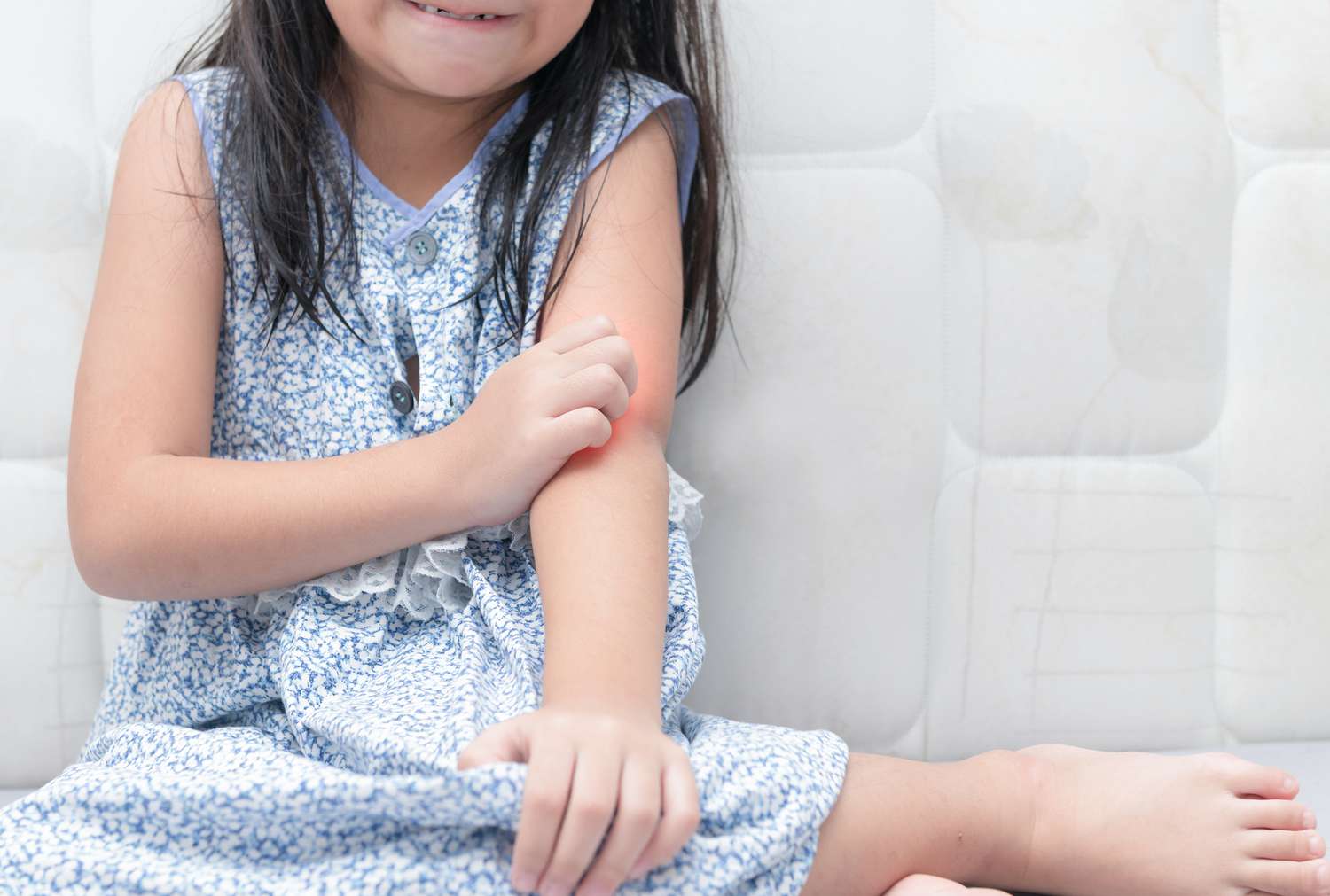
Viral Skin Infections:
A viral skin infection is a condition characterized by the invasion and multiplication of viruses within the skin cells. These infections can manifest in various ways, leading to symptoms such as rashes, blisters, or growths on the skin’s surface. Viral skin infections are typically contagious, spreading through direct contact with an infected person or contaminated surfaces. Common examples include herpes simplex infections, causing cold sores, and molluscum contagious, marked by small, raised bumps. Proper diagnosis and treatment by healthcare professionals are crucial to manage symptoms, prevent transmission, and promote skin health.

What are viruses?
I’m sure you’re used to your doctor saying: ‘It’s just a virus!’ Viruses are tiny germs. You can’t see them with the naked eye. They are all around us and are usually harmless (the common cold is caused by viruses, for example). On the other hand, some can be really bad for you (like HIV).
This leaflet is about how viruses can affect your skin. It will cover the common things that you are likely to see in you and your children.
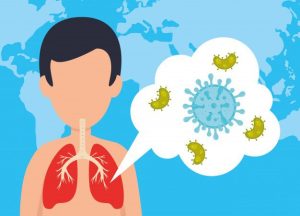
Which infections are viral?
There are some viral skin infections that you catch by touching someone else. Chickenpox is a common example (although you can also catch chickenpox through the air). Molluscum contagiosum and herpes simplex are probably the other most common examples we see in the UK. In the farming community there is something called ‘orf’.
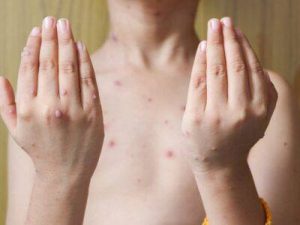
Some More Several skin infections are caused by viruses. Here are some common examples:
- Herpes Simplex Virus (HSV):
- Causes cold sores (HSV-1) or genital herpes (HSV-2).
- Manifests as painful, fluid-filled blisters on or around the lips or genital area.
- Varicella-Zoster Virus (VZV):
- Causes chickenpox during the initial infection.
- Reactivation of the virus later in life leads to shingles (herpes zoster), characterized by a painful rash.
- Human Papillomavirus (HPV):
- Causes various types of warts on the skin, including common warts, plantar warts, and genital warts.
- Molluscum Contagiosum Virus:
- Causes small, flesh-colored or pearly bumps on the skin with a central dimple.
- Measles Virus:
- Results in measles, characterized by a high fever, cough, runny nose, and a distinctive red rash.
Which conditions cause a rash to come out all over?
Back in the 1970s, GPs in the UK used to see measles and German measles: these are viral infection inside your body, but which make a rash come out all over your skin. But nowadays they are practically unheard of in the UK. They are still common in the developing world though. More common examples are pityriasis rosea and hand, foot and mouth disease.
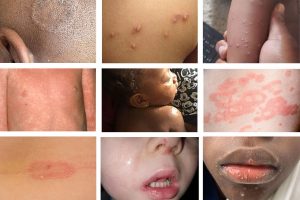
Why does my child come out in a rash if they are a bit ill?
This is probably the most common type of viral skin condition, referred to sometimes as a ‘reactive viral rash’. Family doctors (GPs) see this all the time. It can come out when your child has a high temperature (fever), or even a couple of days after having an illness. It is pretty harmless and not passed on by physical contact (contagious).
What do viral skin infections feel like?
Pityriasis rosea manifests as oval-shaped pale red patches scattered across the body, excluding the face and head. Typically originating with a slightly larger oval on the abdomen or chest, it gives rise to numerous smaller ovals. Despite their appearance, these patches are generally not palpable.
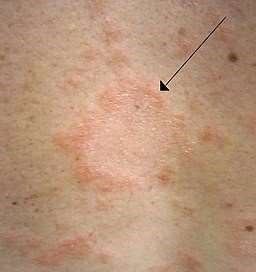
Measles or German measles present rashes that, though severe in appearance, are not physically felt. The accompanying discomfort arises from the viral infection itself.
Hand, foot, and mouth disease result in tiny bumps on the palms, soles, and inside the mouth. While they may cause slight discomfort, they are not explicitly painful or itchy.
Chickenpox displays small, scattered spots on the body, notably on the chest and abdomen. If the spots are confined to the limbs and absent on the torso, it is likely not chickenpox.
Monkeypox can initially resemble chickenpox, but distinctive blisters later fill with cloudy yellow-white fluid. Refer to the specific leaflet on Monkeypox for further details.
Cold sores produce slightly itchy, tingling spots, usually located on the lip’s edge.
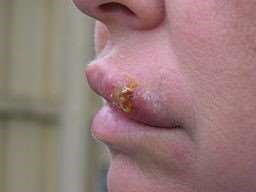
Molluscum contagiosum presents small, clustered spots on the arms or legs. Generally unfelt and non-itchy, they may occasionally become sore if infected.
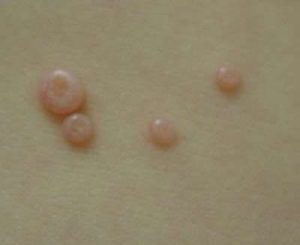
Herpes simplex causes tiny, painful red spots, more discomforting than itchy.
Orf, acquired from infected sheep or goats, results in a rash primarily affecting the fingers, hands, forearms, or face. Although it forms a noticeable bump, it is typically not painful and requires no specific treatment, resolving in about six weeks.
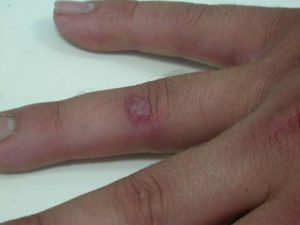
How does my doctor diagnose a viral skin infection?
- Usually a doctor can tell what the skin condition is, by what you tell them and by what it looks like.
- Very occasionally if there is an unusual skin problem that the doctor can’t work out, they may refer you to a doctor who specialises in skin conditions (a dermatologist).
- If a rash looks like mumps or measles then sometimes a doctor will give you a blood test. This is just because it can be important to tell if you’ve definitely had measles or mumps in case there’s an outbreak somewhere, like a school.
How do I know which virus has caused my rash?
Determining the specific virus causing a rash often requires a careful examination by a healthcare professional, as blood tests may not always provide immediate results and are limited in detecting certain viruses. However, certain skin conditions are known to be associated with specific viruses:
- Chickenpox: Caused by the varicella-zoster virus. This virus can remain dormant in the body and later reappear as shingles.
- Pityriasis Rosea: Caused by a type of herpes virus.
- Hand, Foot and Mouth Disease: Caused by Coxsackievirus and enterovirus.
- Mumps and Measles: Caused by the mumps and measles viruses, respectively.
- Molluscum Contagiosum: Caused by the pox virus.
- Orf: Caused by the parapox virus, initially found in sheep or lambs.
- Herpes Simplex: Herpes simplex virus type 1 causes cold sores, while genital herpes is caused by herpes simplex type 2.
How to treat a viral skin infection
The treatment of viral skin infections often involves supportive care and allowing the body to heal on its own. Here are some general considerations for managing viral skin conditions:
- Self-Resolution: Most viral skin conditions tend to improve without specific treatment. The body’s immune system is often effective in clearing the viral infection over time.
- Soothing Lotions: In some cases, using soothing lotions, such as calamine lotion in the instance of chickenpox, can help alleviate discomfort and itching associated with the rash.
- Antiviral Medications: For certain viral skin conditions caused by herpes simplex, antiviral medications prescribed by a doctor may be beneficial in managing symptoms and reducing the duration of the infection.
My doctor said my child has a viral rash – what can I do?
- No Treatment for Mild Cases: If the child has a reactive viral rash along with a mild illness or fever, no specific treatment may be necessary. These rashes are typically not itchy.
- Avoid Creams: Applying creams or lotions to the skin may not be helpful as the rash originates from inside the body.
- Antihistamines Not Effective: Since these rashes are not caused by histamine, antihistamines are not usually effective.
- Patience is Key: Viral rashes in children often fade on their own within a few days. Patience and monitoring for any signs of worsening are important.
Is there anything I can do for chickenpox?
For chickenpox, managing the symptoms and providing comfort is key since the virus typically resolves on its own over time. Here are some things you can do for chickenpox:
Relieve Itching: Use soothing creams such as calamine lotion or any other moisturizer to help relieve itching. Keeping the cream in the fridge can provide an additional cooling effect, contributing to relief.
Cool Baths: Giving the child cool baths can also help ease itching. Adding colloidal oatmeal or baking soda to the bathwater may provide further relief.
Loose Clothing: Dress the child in loose, light clothing to prevent further irritation of the skin.
Trim Nails: Keep the child’s nails short to reduce the risk of scratching, which can lead to infection or scarring.
Hydration: Ensure the child stays well-hydrated, as fever and illness can increase the risk of dehydration.
Rest: Allow the child plenty of rest to help their body recover from the illness.
Pain Relief: If needed, acetaminophen (paracetamol) can be used to alleviate pain and reduce fever. Avoid using aspirin in children with chickenpox due to the risk of Reye’s syndrome.
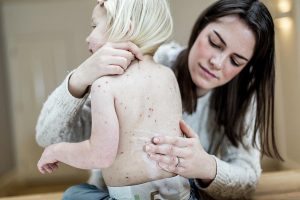
Why does my cold sore keeping coming back?
- Cold sores result from the herpes simplex virus, a particularly persistent virus that remains in your system for an extended period once contracted.
- Despite the temporary relief experienced during each cold sore episode, the virus remains dormant and is never entirely eradicated.
- Factors such as a weakened immune system due to fatigue or certain medications can trigger the reappearance of cold sores.
- Managing each occurrence is possible with antiviral medications like aciclovir or famciclovir, which facilitate a faster resolution of the cold sore
What is the outlook?
Time is usually the best healer. Chickenpox goes away in a few weeks for example. Other viral skin conditions take a while: pityriasis rosea and molluscum contagiosum can take months to go away. However, almost all viral skin conditions do fade away. Once you have had a viral skin condition, it usually does not come back (the exception being herpes simplex).
When should I seek help for a rash?
Occasionally a rash can be a sign of serious illness. The best sign that someone is unwell with a rash is if they feel ill or, in the case of a baby or someone who can’t talk, if they look ill. Rare but life-threatening infections like meningococcal septicaemia can cause a rash but by then the person will also be feeling very ill.
In general, seek medical advice if you or your child have a rash but also feel or look ill.
| Viral Skin Infection | Causative Virus | Characteristics | Transmission | Treatment |
|---|---|---|---|---|
| Herpes Simplex | Herpes simplex virus (HSV) | Causes cold sores (HSV-1) or genital herpes (HSV-2). | Direct contact with infected lesions or bodily fluids. | Antiviral medications, such as aciclovir. |
| Varicella-Zoster (VZV) | Varicella-zoster virus | Causes chickenpox during initial infection and shingles (herpes zoster) upon reactivation. | Airborne or direct contact with the virus. | Antiviral medications, pain management. |
| Human Papillomavirus | Human papillomavirus (HPV) | Causes warts, including common warts, plantar warts, and genital warts. | Direct skin-to-skin contact with an infected person. | Topical treatments, cryotherapy. |
| Molluscum Contagiosum | Molluscum contagiosum virus | Causes small, flesh-colored or pearly bumps with a central dimple. | Direct skin-to-skin contact or fomite transmission. | Cryotherapy, topical treatments. |
| Measles | Measles virus | Results in measles with a characteristic red rash, high fever, and respiratory symptoms. | Airborne transmission through respiratory droplets. | Supportive care, vaccination. |



